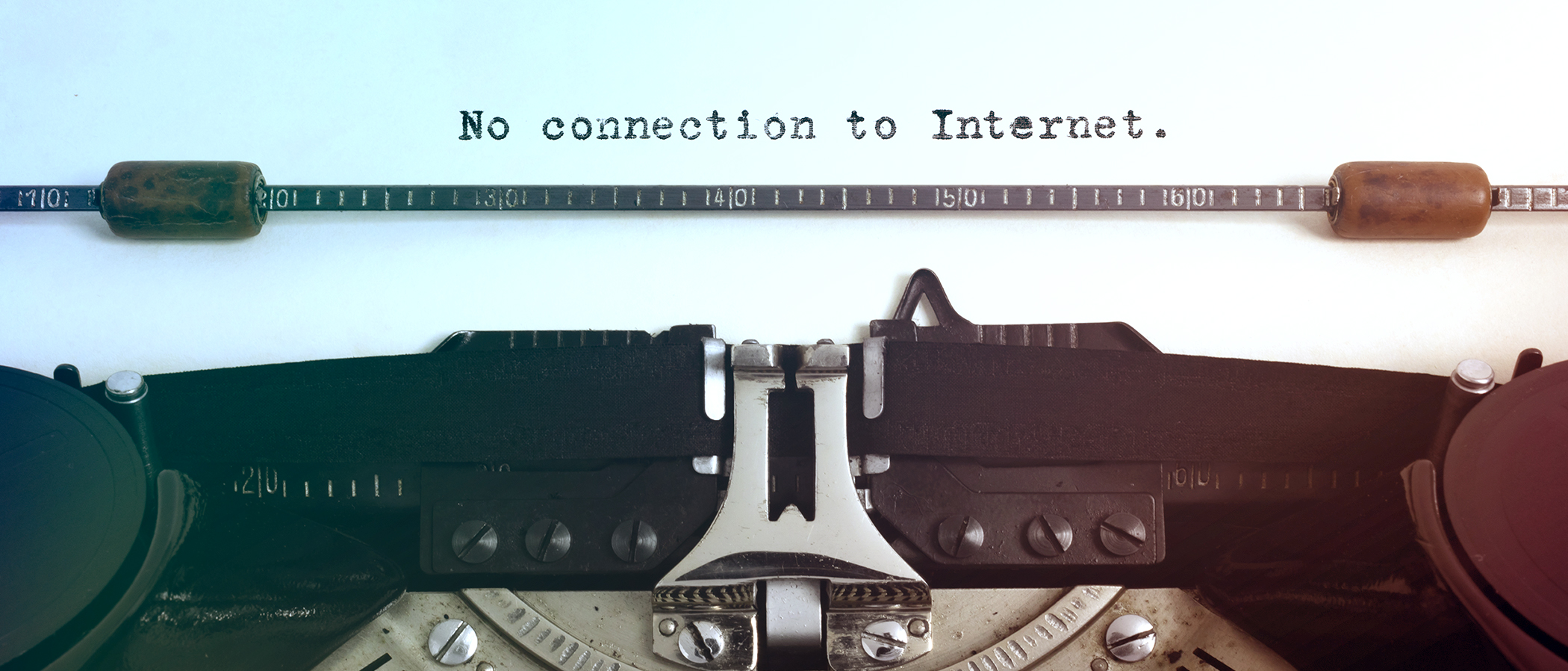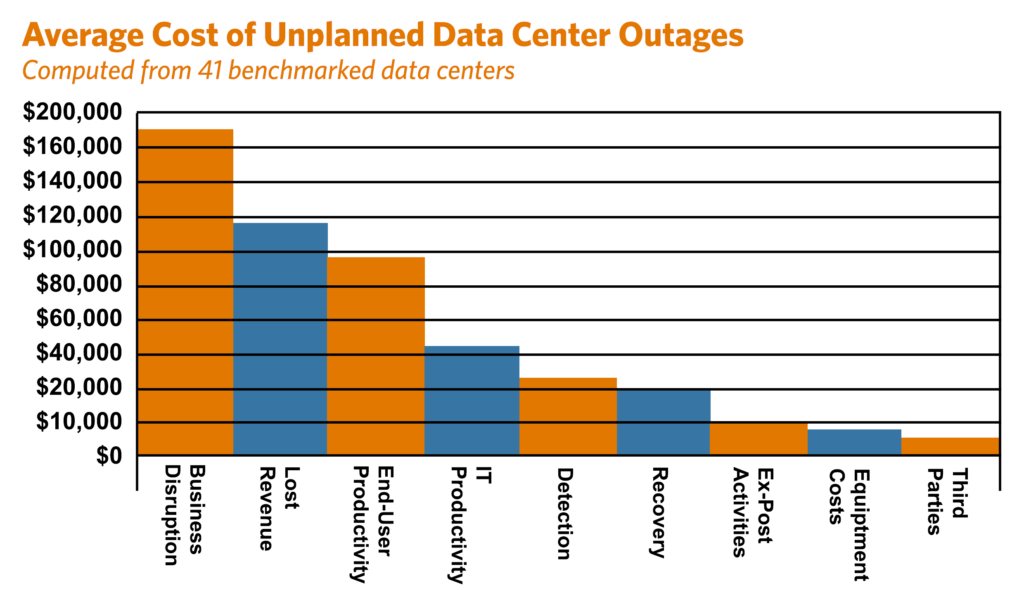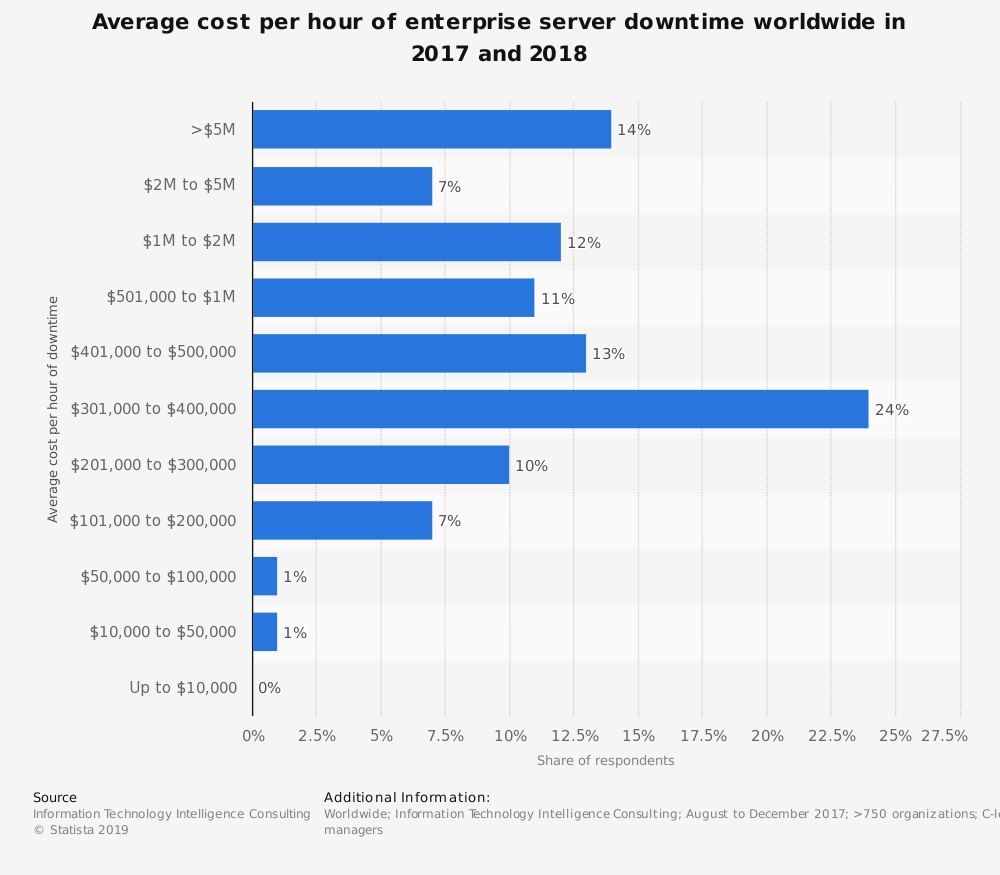
Technology can be seen in the smallest details of day-to-day business operations, from increasing productivity to creating significant competitive advantage. However, most businesses have become so reliant that downtime associated with an outage, security breach, or catastrophic event can be detrimental to the bottom line. Do you know the real cost of business interruption?
Have you ever experienced a technology outage? If so, what did the outage cost you? According to Gartner, the average cost for one minute of downtime is $5,600, while 98% of organizations claim that a single hour of downtime costs over $100,000.
Interruptions consume, on average, 238 minutes per day and an additional 84 minutes to get back up and running. This equates to an estimated cost of $588 billion a year in the U.S.
 60% of small businesses that experience catastrophic events like hacking and ransomware shut down within 6 months of the attack. Other lesser events can cause significant downtime, loss of productivity and costs.
60% of small businesses that experience catastrophic events like hacking and ransomware shut down within 6 months of the attack. Other lesser events can cause significant downtime, loss of productivity and costs.
While revenue is the main factor affected by an IT disruption, it is not the only. Below are the three main ways an outage will disrupt your business:
Loss of Revenue
Have you calculated what one hour of downtime would cost your business? According to Gartner, downtime can be as much as $140,000 per hour, $300,000 per hour on average, and as much as $540,000 per hour at the higher end. Back in 2017, Delta airlines had to cancel 280 flights due to an outage. This single outage incident cost the airline over $150 million dollars. How would a single IT interruption impact your bottom line?
Productivity
On average, businesses lose 14.1 hours per year to IT downtime, equating to 545 hours of staff productivity. More so, the average company spends over 200 minutes to resolve a single incident of IT downtime. How much time have you spent dealing with IT interruptions in the past year?
Brand and Reputation
How your organization is perceived by your customers and stakeholders is pivotal to your success. Downtime not only can jeopardize customer relationships, it can also impact sales and brand equity. An outage or breach, especially one that is not handled expeditiously, can have a long-term impact on your brand reputation and negatively impact revenue and profitability.
 While no business is immune to IT interruptions, there are numerous ways that you can prepare yourself for such an event. By putting a P.I.E. strategy in place you can prevent an outage and drastically reduce the costs associated with downtime.
While no business is immune to IT interruptions, there are numerous ways that you can prepare yourself for such an event. By putting a P.I.E. strategy in place you can prevent an outage and drastically reduce the costs associated with downtime.
Plan
IT outages are often avoidable with strong technology strategies and systems in place. Run regular threat and vulnerability assessments and configuration reviews. This will help your business prevent many of the system failures that can occur. More so, conduct drills and tests to ensure you’re prepared for worst case scenarios to reduce downtime.
Next, make sure you have an effective disaster recovery plan in place. The plan should include the technology and processes required to get your business back up and running as quickly as possible. Prepare for an outage but take every precaution to prevent as much downtime as possible.
Improve Training Process
75% of all downtime is not related to a failure of technology, but rather, is caused by configuration, administration and human error. In fact, 22% of all IT outages are a direct result of human error. The majority of outages could be prevented by improved training and/or planning. Instruct employees on the proper way to report issues, how to prevent outages and breaches, what to do during an outage.
Engage a Qualified Service Provider
According to a survey in USA today, one in every 10 companies stated that they need their uptime to be greater than 99.999%. And while it is impossible for a company to achieve zero downtime, there are service providers that can come close to obtaining the goal. For instance, Calyx IT has reported 99.997% uptimes on network service — among the best in the industry. Calyx also reduces IT ticket incidents by 75%, minimizing downtime and increasing productivity.
Take the time to understand the real cost of business interruption, and put a plan in place to address inevitable downtime. Your organization stands to save thousands or even millions of dollars, as well as protect brand reputation and customer loyalty.
